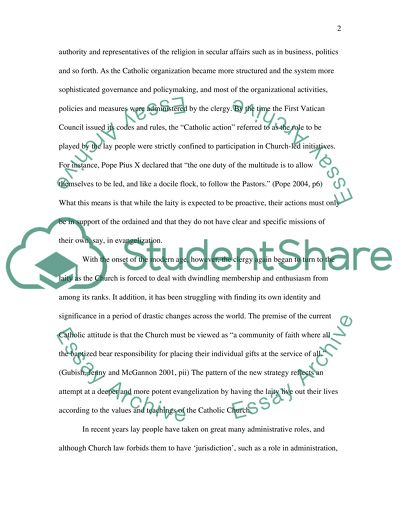Cite this document
(“The role of lay Catholics in the Church according to the teaching of Assignment”, n.d.)
Retrieved from https://studentshare.org/religion-and-theology/1405654-what-is-the-role-of-lay-catholics-in-the-church
Retrieved from https://studentshare.org/religion-and-theology/1405654-what-is-the-role-of-lay-catholics-in-the-church
(The Role of Lay Catholics in the Church According to the Teaching of Assignment)
https://studentshare.org/religion-and-theology/1405654-what-is-the-role-of-lay-catholics-in-the-church.
https://studentshare.org/religion-and-theology/1405654-what-is-the-role-of-lay-catholics-in-the-church.
“The Role of Lay Catholics in the Church According to the Teaching of Assignment”, n.d. https://studentshare.org/religion-and-theology/1405654-what-is-the-role-of-lay-catholics-in-the-church.


